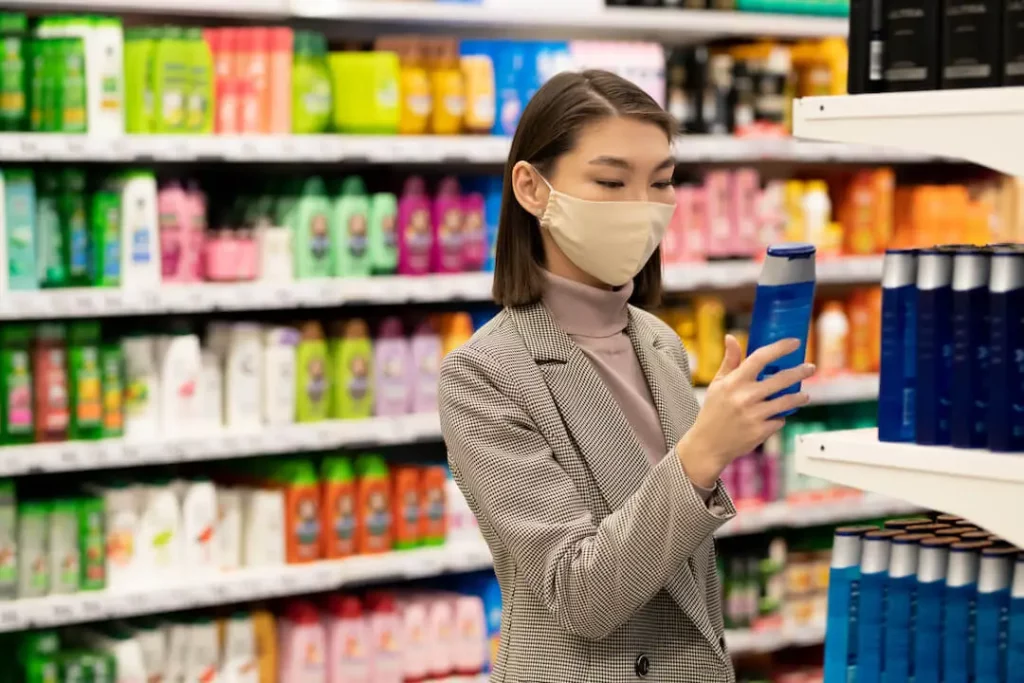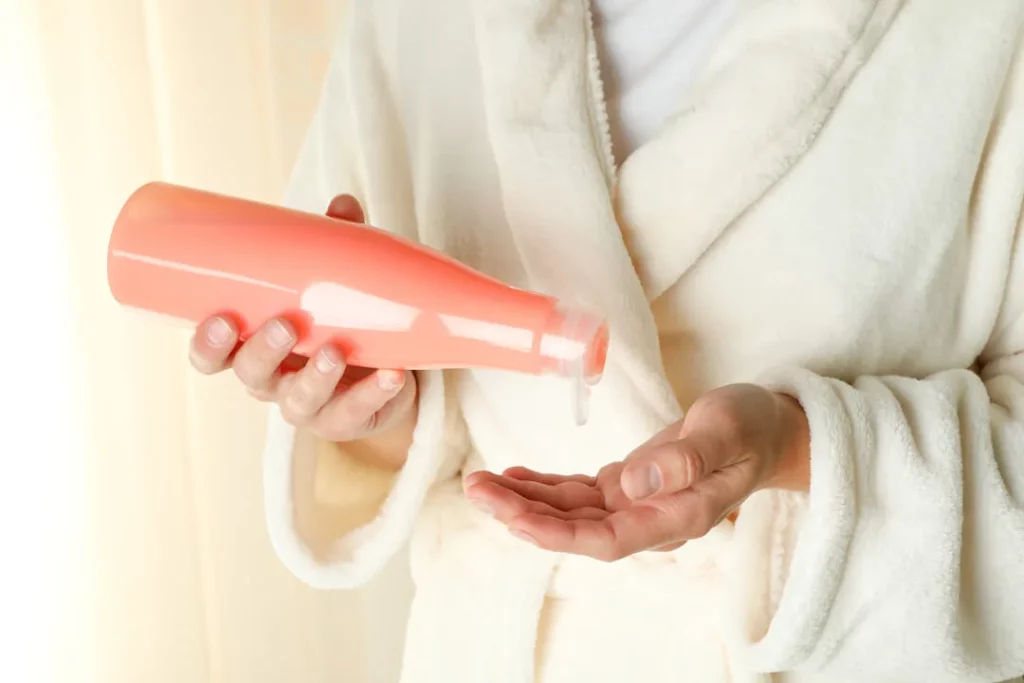Pregnancy is a vulnerable time for a woman, and it’s natural to want to find the very best for you and your baby. Luckily, many great pregnancy safe shampoos fit your needs.
Here’s how to know if a shampoo is pregnancy-safe:
- Know what ingredients are safe for pregnancy
- Avoid harmful carcinogens like phthalates and sulfates
- Investigate your shampoo’s label and try approved brands
In this article, we will discuss things to look for in pregnancy-safe shampoos, which ingredients to avoid, where you can find shampoos safe for pregnancy, and why it’s crucial to find one.
1. Know What Shampoo Ingredients Are Safe For Pregnancy
A shampoo is pregnancy-safe if it is free of harmful chemicals and is ethically made. Other shampoos may contain chemicals that could interfere with your or your baby’s health, so it is crucial to use a natural shampoo with no harmful additives when you’re expecting.
Here are the ingredients to look for in a pregnancy-safe shampoo:
- Essential oils
- Coconut oil
- Jojoba oil
- Argan oil
- Honey
- Aloe vera
- Organic extracts from fruits, vegetables, and flowers
Natural Versus Organic
In the United States, the word “natural” is not regulated in cosmetics, which means brands can claim an ingredient is natural, but it could be a harmful chemical.
So, look for a USDA certification stamp on a shampoo’s label. A USDA organic certification label on the bottle means that 95% of the ingredients are organic.
Leaping Bunny Certified
If you see the Leaping Bunny symbol on a shampoo bottle, that is a positive sign right away. Leaping Bunny is an organization that promotes cruelty-free products, and brands can apply to have their products certified.
If a brand is Leaping Bunny Certified, they do not test on animals, which means they are likely to have clean, pregnancy-safe products.

2. Avoid Harmful Carcinogens Like Phthalates and Sulfates
There are many hidden ingredients in shampoo that can make it unsafe for pregnancy, so it’s crucial to know what to look for and avoid.
What Shampoo Ingredients Are Not Pregnancy-Safe?
The shampoo ingredients that are not pregnancy-safe are phthalates, fragrances, and sulfates. These chemicals and additives may contain cancer-causing components that could harm your baby if the shampoo enters your body or seeps into your skin.
Phthalates
The CDC defines phthalates as “a group of chemicals used to make plastics more durable.” Phthalates are plastics that can enter the body in many ways, including:
- Ingestion through food
- Skin absorption from cosmetic products
- Breathing in phthalates through the air
In shampoos, the phthalates can be absorbed through the skin on the head and then enter the bloodstream, which can reach the fetus and have adverse effects.
A recent study done by the Journal of the National Cancer Institute showed that phthalate exposure in children from in utero until 19 years old had a strong association with osteosarcoma and lymphoma.
Pregnant women need to choose a shampoo that doesn’t have phthalates to ensure their baby is as healthy as possible.
Fragrances
It’s common to want to smell good, and we are drawn to appealing scents, especially in what we put on our bodies. Shampoo scents range for men and women, and it’s valid to choose a shampoo based on how it smells.
However, fragrance in cosmetic products like shampoo doesn’t just mean the smell – it also indicates how the shampoo makers added the scent. Because manufacturers don’t specify what “fragrance” means, they hide phthalates and sulfates in the “fragrance” ingredient because these plastics help bond the fragrance.
If a shampoo has a fragrance listed on the ingredients but doesn’t specify that the scent is organic, be wary of that product because it likely contains phthalates, which can be harmful and unsafe for pregnant women.
Sulfates
Sulfates are a chemical included in shampoo to create a foamy lather. Even though this lather can feel luxurious and clean, this is because sulfates are a form of carcinogen or substances that can cause cancer, stripping your hair and scalp of natural oils.
Sulfates go under the following names on the ingredients:
- Ammonium Lauryl Sulfate
- Sodium Laureth Sulfate (SLES)
- Sodium Lauryl Sulfate (SLS)
Keep an eye out for these terms when buying a safe pregnancy shampoo.

3. Investigate Your Shampoo’s Label and Try Approved Brands
With all of these chemicals being so common in shampoo, it can feel overwhelming when trying to find a pregnancy-safe shampoo.
Clean Shampoo Brands To Try
You might be thinking that finding a shampoo that doesn’t have any harmful chemicals is an impossible task. Still, with more awareness coming of the issue of phthalates and other carcinogens in cosmetic products, more brands are creating organic and sustainable shampoos that are safe for pregnancy and beyond.
Forbes has a vetted list of clean shampoo brands to try that range in budget and hair type. You can check out the full article here. Amazon also has a complete list of organic shampoos that you can look at, but you should still double-check the label for those harmful ingredients we discussed earlier.
Five popular all-natural shampoos (available on Amazon.com) that are safe for pregnancy are:
- Shea Moisture. Great for those on a budget and with curly hair or hair that needs hydration.
- Avalon Organics. Emphasizes plant-based and essential oil ingredients.
- Pura D’or. Strives for sustainability and natural ingredients.
- True Botanicals. It uses a “coconut-derived surfactant” to create a sulfate-free lather.
- Rahua. Sustainably made from rainforest ingredients.
Use an App
These days apps can solve just about any problem, even finding a pregnancy-safe shampoo. Think Dirty is a free app that you can download on your phone that explains the ingredients in different products to help you make informed buying choices.
You just scan the product’s barcode and Think Dirty will tell you which ingredients are clean and which are dirty.
Why Is It Important To Use Pregnancy Safe Shampoo?
It is important to use pregnancy-safe shampoo because babies in the uterus are more vulnerable to harmful chemicals. There is evidence that “lasting detrimental impacts” can be found in babies exposed to detrimental chemicals while in utero.
In this article written by the Physicians for Social Responsibility, researchers mentioned that one of these dangerous chemicals listed was phthalates. The related effects are: “Birth defects, shortened gestational age, and impaired neurodevelopment in girls.”
In addition, pregnant women go through drastic hormone changes, and harmful ingredients in shampoo can alter hormone regulation in women.
Phthalates and parabens have adverse effects on hormones like estrogen, which can have negative and lasting consequences for the fetus. That is why it’s so essential to use pregnancy-safe shampoo.

Final Thoughts
Even though there are so many harmful chemicals in shampoo today, there are many good ingredients and brands that you can turn to for pregnancy-safe shampoo. The fragile state of a baby in utero makes it so important to find a clean and safe shampoo for pregnancy.
Thanks for reading!
If you enjoyed this article related to pregnancy, you may want to checkout Constipation Pregnancy Symptoms and For Breastfed Babies and Ovarian Cyst Rupture Treatment Fully Explained.
Sources
- NRDC: Chemicals to Avoid When You’re Pregnant or Breastfeeding
- PSR: Prenatal Exposure to Toxic Chemicals
- CDC: Phthalates Factsheet
- Journal of National Cancer Institute: Medication–Associated Phthalate Exposure and Childhood Cancer Incidence
- Genesis Career College: 8 Ingredients to Avoid in Your Shampoo and Conditioner
- Genome: Carcinogen
- Healthy Taste of Life: What To Look For In A Shampoo | What Ingredients To Avoid
- Forbes: The 10 Best Clean, Natural And Organic Shampoos To Try Now
- Amazon: Best Organic Shampoos
- USDA Agricultural Marketing Service: Labeling Organic Products

About The Author
M.D Mark D. is a Health and Wellness professional writer. Mark has authored many health articles around the following topics: Men’s Health, Women’s Health, Fitness, Nutrition, Pets Health, Mental Health, Medicine, and Supplements.